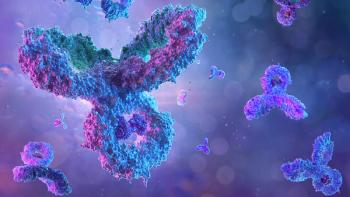
- BioPharm International-04-01-2008
- Volume 21
- Issue 4
Disposable Bioreactors: The Next Generation
Disposable technologies that mimic the conventional stainless-steel bioreactor will be most readily adopted
In recent years, disposable systems have moved from fluid handling to processing—a clear sign of the growing acceptance of disposable technologies. This acceptance is also evident in the increased use of disposable bioreactors in biopharmaceutical manufacturing.
Andrew Sinclair
When talking about bioreactors, we must recognize that different microorganisms place different demands on the bioreactor. For instance, E. coli fermentations are complete in 24 hours, whereas a mammalian cell culture takes 12–20 days. The current range of disposable bioreactors is limited to the less demanding cell culture applications. The performance of the agitation system, the sparging of gases, and the ability to provide good temperature control as well as good instrumentation and control, are critical to the efficiency of a disposable bioreactor.
THE FIRST STEPS
The disposable bioreactor has attracted a lot of interest from suppliers, who see this as the first step in the development of a wholly disposable bioprocess. The first commercially successful bioreactors appeared in 1998, in the rocking bag format, developed and sold by Wave Biotech, now part of GE Healthcare. Initially, their main applications were in the research and development (R&D) arena, followed by their use in pilot plant operations. Today, they find application in inoculum preparation and some smaller-scale manufacturing. As applications move from R&D into manufacturing, bioreactor requirements change, with the production environment demanding systems that are scalable, robust, and reliable.
SCALABILITY
A major impediment to wide-scale adoption of disposable bioreactors in manufacturing has been scale. For large-scale manufacturing, the 6 X 12,000-L bioreactor module (often referred to as the six pack) was seen as the standard format in stainless steel. Until recently, disposable bioreactors have been limited to 500 L or below, and there have been concerns about scale-up and scale-down. But the industry is changing. According to Johannes Roebers, senior vice president and head of biologic strategy, Planning & Operations, at Elan Pharmaceuticals, disposables systems are not suitable for every manufacturing operation at the moment. Roebers believes, however, that as titers increase, the bioreactor volumes required in manufacturing will reduce, and in certain situations disposable bioreactors will become a viable alternative to stainless steel. The implication is that high titer processes require smaller bioreactor volumes and the increasing disposable bioreactor size will make it easier for smaller companies to invest in small-scale manufacturing capacity. However, higher titers require higher cell densities which, coupled with larger volumes, will place greater demands on the bioreactor performance. Companies considering scale-up of processes have to consider the greater demands of high cell densities, and decide what to do if product success requires that they move the process to large-scale stainless-steel bioreactors. One company we work with is moving from the rocking bag bioreactor configuration to the stirred-tank disposable configuration for these reasons.
THE NEXT GENERATION
The move to disposable bioreactors is driven by reduction in clean-in-place and steam-in-place requirements, reduced contamination, improved flexibility, reduced costs, and faster implementation. Our economic models show that between 30–50% of the cost of goods is associated with upstream bioreactors, and disposable bioreactors can simplify the whole operation by, for example, reducing piping services. The other big benefit is that the suppliers will provide a new bioreactor from order to operation, in as short as 12 weeks, compared to 1–1.5 years for a stainless-steel unit. A new generation of larger-scale stirred disposable bioreactors has appeared in commercial manufacture over the last three years. This trend is led by Thermo Fisher's single-use bioreactor (SUB), available in sizes up to 1,000 L, followed by Xcellerex's single-use XDR bioreactor, available in sizes up to 2,000 L. The market leader seems to be the SUB, and Thermo Fisher reports that it has sold over 100 of the 50- and 250-L hardware units since their launch in April 2006. Many of these have started to appear in good manufacturing practice (GMP) manufacturing facilities as production bioreactors. Several SUB users have compared it favorably to stainless-steel systems: presentations from Centocor, Baxter, DSM, and Merck are in the public domain. Jon Reid, Thermo Fisher's global director of BPC Marketing, expects the market for disposable bioreactors to grow in excess of 20% per annum for at least the next three years.
Currently, Wave dominates the the market in R&D and small-scale manufacturing. For large-scale GMP manufacturing, the SUB appears to be the market leader, followed by the XDR. There are also several new entrants, such as the consortium of Pierre Guerin with ATMI and Artelis, who have launched the Nucleo range bioreactor. Sartorius Stedim Biotech is also believed to be developing a disposable bioreactor.
SIMILARITY TO STAINLESS
What has led to the rapid adoption of the large-scale bioreactors over the last two years? Jon Reid's view is that biopharmaceutical manufacturing is a conservative market and is used to the stainless-steel configuration. The more similar the bioreactor configuration, instrumentation, and control systems are to the stainless-steel bioreactor, the greater will be the acceptance. The ready acceptance of the SUB and XDR may be because their height to diameter ratios are similar to their stainless-steel counterparts, and both use conventional instrumentation. The SUB differs from the XDR in that the SUB has a mechanically linked agitator compared to the XDR's magnetically coupled unit. The mechanically coupled agitator provides scope for precise positioning of the impellor and the option to go for different designs in the drive to improve heat and mass transfer.
THE FORSEEABLE FUTURE
So what's important from the user's perspective and where are the challenges? According to a recent presentation at the ISPE 2008 Conference on Manufacturing Excellence by Dave Wareheim, engineering fellow at Centocor, users want similar geometries to stainless-steel bioreactors with good mixing, gas distribution, and heating and cooling.
To date, disposable bioreactors have primarily been used in cell cultures. The shift in their usage in microbial or yeast systems will not be easy and will require significant technical advances. Going forward, bioreactor volume will probably not increase much above 2,000 L; both Xcellerex and Thermo Fisher have stated that this is the limit for the foreseeable future. The maximum working volume for the Wave is 500 L. Technical improvements are required in mixing, sparging, and heating and cooling of the current models. These are essential to meet the demands of the high-titer processes, especially at larger volumes. At present, the instrumentation used is based on conventional probes. It is expected that these will be replaced by disposable sensors. There will be a large number of new entrants into this market followed by a consolidation. Disposable bioreactors will become the dominant technology in biomanufacturing operations. Their adoption is being driven by two trends—reduced manufacturing costs and the development of high-titer processes. Given the conservative nature of our industry and the requirements of scale-up and scale-down, disposable technologies that mimic the conventional stainless-steel bioreactor will be most readily adopted.
Andrew Sinclair is the managing director at Biopharm Services, Chesham, Bucks, UK, +44 (0) 1494 793 243,
Articles in this issue
over 17 years ago
Getting the Results You Expect from Consultantsover 17 years ago
Pharmaceutical Quality Success: It's All About Managementover 17 years ago
Trends in Convertible Note Financing for Biotechsover 17 years ago
Filter Clogging Issues in Sterile Filtrationover 17 years ago
Understanding India's New Patent Lawsover 17 years ago
FDA's Inspection Program Under Scrutinyover 17 years ago
What We Don't Know May, In Fact, Hurt UsNewsletter
Stay at the forefront of biopharmaceutical innovation—subscribe to BioPharm International for expert insights on drug development, manufacturing, compliance, and more.





